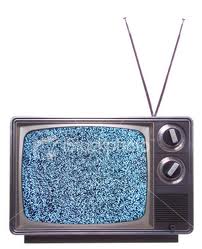
The Invention of Television
The transmission of images obsessed inventors as early as 1875 when George Carey of Boston proposed his cumbersome system. Only five years later, the principle of scanning a picture, line by line and frame by frame - still used in modern television sets - was proposed simultaneously in the USA (by W.E. Sawyer) and in France (by Maurice Leblanc). The first complete television system - using the newly discovered properties of selenium - was patented in Germany in 1884, by Paul Nipkow. Boris Rosing of Russia actually transmitted images in 1907. The idea to incorporated cathode -ray tubes was proposed in 1911 by a Scottish engineer, Campbell Swinton.
Another Scot, John Logie Baird, beat American inventor C.F. Jenkins to the mark by giving the first public demonstration of - a dim and badly flickering - television in 1926 in Soho, London. Britain commenced experimental broadcasting almost immediately thereafter. Irish actress Peggy O'Neil was the first to be interviewed on TV in April 1930. The Japanese televised an elementary school baseball match in September 1931. Nazi Germany started its own broadcasting service in 1935 and offered coverage of the 1936 Olympics. By November 1936, the BBC was broadcasting daily from Alexandra Palace in London to all of 100 TV sets in the kingdom.
At the beginning there were many competing standards on both sides of the Atlantic. Baird's technological solutions were trounced by Isaac Shoenberg and his team, set up in 1931 by Electric and Musical Industries (EMI). RCA refined its own system, as did the Dutch Philips. Not until 1951 were the standards for public broadcasting set in the USA and in Europe.
But the Americans were the ones to grasp the commercial implications of television. Bulova Clock paid $9 to WNBT of New York for the first 20-seconds TV spot, broadcast during a game between the Brooklyn Dodgers and the Philadelphia Phillies in July 1941. Soap operas followed in February 1947 (DuMont TV's A Woman to Remember) and the first TV news helicopter was launched by KTLA Channel 5 in Los Angeles on 4 July 1958.
The first patent for color television was issued in Germany in 1904. Vladimir Kosma Zworykin, the Russia-born American innovator, came up with a complete color system in 1925. Baird himself demonstrated color TV transmission in 1928. Various researchers at Bell Laboratories perfected color television in the late 1920s. Georges Valenso of France patented a series of breakthrough technologies in 1938. But color TV became widespread only in the 1960s.





















